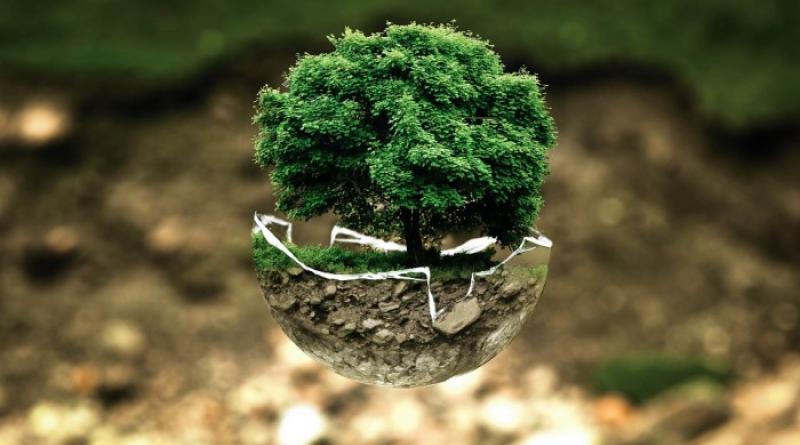Public Trust’—A Key Legal Tool to Preserve Our Natural Resource

With the reality of climate change becoming more apparent in the form of extreme weather events such as heat waves, droughts, and floods, it is clear that the future of all life on the planet is in peril. To stress the immediacy and seriousness of human-caused climate change and its effects, United Nations Secretary-General António Guterres addressed the leaders and representatives of nearly 200 countries at COP27 in November 2022.
“Our planet is fast approaching tipping points that will make climate chaos irreversible,” said Guterres at the conference. “We are on a highway to climate hell with our foot still on the accelerator.”
As the climate rapidly changes largely due to the environmentally damaging practices of large corporations, unchecked by government officials that receive campaign contributions from the polluting industries, it may seem like there isn’t much that can be done to combat this problematic pattern.
However, there are underutilized legal weapons already on the books that can help fight big corporations and preserve the planet’s natural resources, such as watersheds and large forests, like those in Oregon—which can either serve as a sponge for carbon dioxide or an emitter when the forest cover is cut down. That legal weapon, a component of property law, is a concept known as the public trust.
“The public trust lies in the realm of fundamental rights law,” says University of Oregon Philip H. Knight Professor Mary Christina Wood. “Its roots actually go back to Roman law and the institutes of Justinian, which does seem like a long time ago, but every court case today that deals with the public trust mentions those Roman roots, literally.”
The institutes of Justinian or Justinian the Great, a Roman emperor ruling in the sixth century, declared that certain natural resources are always considered under public ownership, and those resources are air, water, and coastlines, according to Wood.
“The public trust has its origins in public property rights,” says Wood. “The Roman law became the basis of civil and common law systems around the world.”
The Roman concept that the public has ownership of natural resources subsequently became embedded in English law. After the Magna Carta was established in 1215, the king of England could not assert full dominion over fisheries, forests, or water, according to Wood.
In the law of the United States, the public trust principle is also present but is expressed in a slightly different way than the English monarchy.
“In this country [the U.S.], it was announced as the most simple and logical principle,” says Wood. “The government is a sovereign with the people giving it power, and the government does not have the power to fully privatize resources that are crucial. Those stay in trust for the people—and the government works as a trustee or fiduciary steward of those resources, and the beneficiaries are present and future generations of citizens.”
Wood points out that the public trust has always been a part of United States law, but isn’t always utilized in the context of protecting natural resources, with statutory laws such as the Clean Air Act of 1963 and others being more commonly used in court cases.
“I’m just sort of taking it off the shelf,” says Wood.
When Wood was a student at Stanford Law School, one of her professors was Joseph Sax, who was a pioneer of public trust scholarship. Wood was inspired by Sax’s work and took the concept of the law further by devising a litigation strategy based on the public trust, which continues to evolve.
She has also written a book called Nature’s Trust: Environmental Law for a New Ecological Age, which critiques statutory environmental law, in the sense that the laws don’t go far enough to protect natural resources. She also discusses established public trust principles in her book and identifies the responsibilities the government has to protect natural resources in the context of the public trust.
To put the concept in different terms, Wood explains the public trust through a financial example.
“Say you have a college-age daughter and you have $500,000 to pay for her college, but you don’t want to deal with the money management because you’re too busy,” says Wood. “So you appoint me as a trustee for the college account. As the trustee, I am the legal owner of that account. I manage it, safely invest it and pay [your daughter] the dividends, and she is the beneficial owner. If I screw up in some way or buy a condo with the money, which is what our political representatives are kind of doing by using our resources as a payback for political contributions, I have violated a fiduciary obligation to your daughter.”
In all, there are about 10 fiduciary obligations or legal responsibilities that the government has to its citizens with regard to vital natural resources that are a part of the public trust, which are outlined in Wood’s book and recent talk.
“The most basic fiduciary obligation is the duty of protection,” says Wood. “You protect the wealth of the trust.”
Wood notes that clear-cutting of forests is a violation of the public trust, as it releases large amounts of carbon. Although she points out that it is debatable whether a forest is considered part of the public trust, there is no debate about water and air’s inclusion. When a forest is clear-cut, it affects the watershed and releases carbon into the atmosphere, which violates another fiduciary obligation.
“That violates the duty to maximize benefit to the public,” says Wood. “The public has many interests in that ecology. It serves as a watershed and a habitat, and typically speaking, the agencies are taking actions for the primary benefit of a private party and not for the public.”
Because of the Citizens United court case, Wood can’t legally do anything about timber companies that give contributions to political campaigns, but with the public trust law she found a loophole with the fiduciary duty of loyalty.
“The government has many functions, and one of those is dealing with natural wealth,” says Wood. “The agencies in those dealings are public trustees, and courts say this across the board.”
In this context, when a legislator accepts a campaign contribution and makes a decision about the wealth of the public trust—say, a watershed—that benefits the contributor, then that is a violation of the public trust. This allows lawyers like Wood to challenge and legally invalidate the actions of legislators who try to give favors to their financial backers, but only in the sphere of natural resources protected in the public trust.
“It’s a full frame change of the law,” says Wood.
One group fighting to protect natural resources in the public trust in Oregon is called North Coast Communities for Watershed Protection (NCCWP), a grassroots organization of Oregon residents. The group is concerned with the protection of drinking water that comes from forested watersheds, and air quality, which are both negatively impacted by common timber industry practices like clear-cutting, slash burning, and pesticide spraying in forests that surround communities in Oregon. The group’s awareness-raising petition, launched in summer 2022, calls for the cessation of logging operations and pesticide use in drinking watersheds across the northern Oregon coast. Because the petition is not a legal petition but instead aims at increasing public awareness, anyone from anywhere can sign it. The group plans to present the petition to city, county, and state-level lawmakers in Oregon, as well as a number of relevant stakeholders, in an effort to increase consciousness about the ways communities are impacted by industrial timber practices.
Wood points out that the work of groups like NCCWP is vital to combating environmental degradation and fighting climate change, but changing the status quo will take even more audacious actions.
“We are going over Niagara Falls, all of us,” says Wood. “We really need some bold thinking, and I think that the public trust is that because it reorients government back to the basic principles of substantial impairment. So I try to create legislative approaches that hit hard and hit big.”
Law professor Mary Wood breaks down how people can protect their right to clean air, water, and land as well as fortify their climate change resiliency.
By Aric Sleeper
Author Bio: Aric Sleeper is an independent journalist whose work, which covers topics including labor, drug reform, food, and more, has appeared in the San Francisco Chronicle and other publications local to California’s Central Coast. In addition to his role as a community reporter, he has served as a government analyst and bookseller.
Source: Independent Media Institute
Credit Line: This article was produced by Local Peace Economy, a project of the Independent Media Institute.





